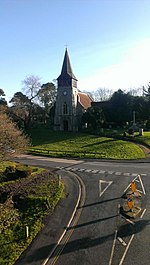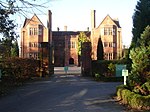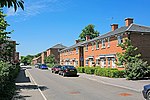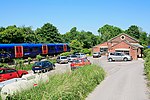Wickham railway station (Hampshire)
Disused railway stations in HampshireFormer London and South Western Railway stationsPages with no open date in Infobox stationRailway stations in Great Britain closed in 1955Railway stations in Great Britain opened in 1903 ... and 3 more
South East England railway station stubsUse British English from September 2017Vague or ambiguous time from March 2018

Wickham (Hants) railway station served the village of Wickham in Hampshire, England. It was on the Meon Valley line of the London and South Western Railway. The station opened in 1903 and closed to passengers in 1955 and to goods in 1962. The main building was to a design by the architect T. P. Figgis.
Excerpt from the Wikipedia article Wickham railway station (Hampshire) (License: CC BY-SA 3.0, Authors, Images).Wickham railway station (Hampshire)
Meon Valley Trail, Winchester Wickham
Geographical coordinates (GPS) Address External links Nearby Places Show on map
Geographical coordinates (GPS)
| Latitude | Longitude |
|---|---|
| N 50.9015 ° | E -1.1833 ° |
Address
Wickham
Meon Valley Trail
PO17 5JZ Winchester, Wickham
England, United Kingdom
Open on Google Maps







